 W
WAgalychnis callidryas, known as the red-eyed treefrog, is an arboreal hylid native to Neotropical rainforests where it ranges from Mexico, through Central America, to Colombia. It is sometimes kept in captivity. The scientific name of the red-eyed treefrog, A. callidryas, comes from Greek words kalos (beautiful) and dryas.
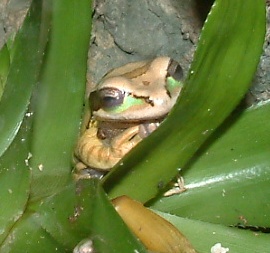 W
WThe blue-spotted Mexican tree frog is a species of frogs in the family Hylidae found on the Atlantic slopes of southeastern Mexico, Belize, and Guatemala, between Jalapa de Díaz in Mexico and Sierra del Mico in Guatemala. Its natural habitats are humid mid-altitude and montane forests, and it can also occur in secondary forest. Breeding takes place in temporary pools and streams and in depressions in logs that fill up with water. It is threatened by habitat loss and, potentially, chytridiomycosis.
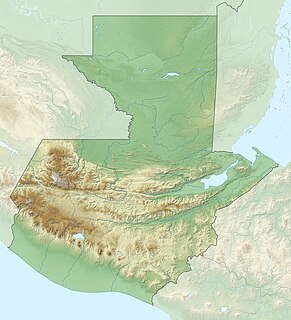 W
WBolitoglossa psephena is a lungless salamander in the family Plethodontidae. It is endemic to Guatemala and only known from its type locality, Finca Santa Elena near Chimaltenango. The specific name is derived from the Greek psephena, meaning dark or obscure, and refers to the uniformly dark coloration of this small salamander.
 W
WThe Copan stream frog is a species of frogs in the family Hylidae found in Guatemala, Honduras, Nicaragua, and possibly El Salvador. Its natural habitats are subtropical or tropical moist lowland forests, subtropical or tropical moist montane forests, rivers, pastureland, and heavily degraded former forests. It is threatened by habitat loss.
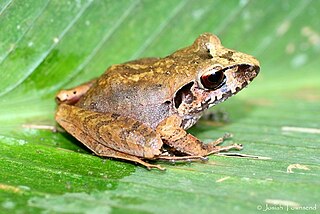 W
WCraugastor laticeps is a species of frog in the family Craugastoridae. It is found in Belize, Guatemala, Honduras, and southern Mexico.
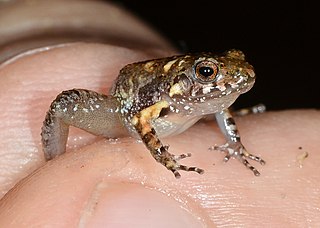 W
WCraugastor pygmaeus is a species of frog in the family Craugastoridae. It is found in Guatemala and Mexico. Its natural habitats are subtropical or tropical moist lowland forests and subtropical or tropical moist montane forests. It is threatened by habitat loss.
 W
WCraugastor sabrinus, also known as the long-legged streamfrog, is a species of frog in the family Craugastoridae. It is found in Belize and eastern Guatemala. The specific name sabrinus is derived from the Latin sabrina, meaning "river nymph", and alludes to the stream-side habitat of this species.
 W
WDendropsophus ebraccatus, also known as the hourglass treefrog or pantless treefrog, is a neotropical treefrog, found scattered throughout Central and South America from southern Mexico to northern Ecuador. The common names of D. ebraccatus come from the dark hourglass shaped pattern found in the centre of the back and the distinct smooth yellow thighs that contrast the rest of the brazenly patterned body. The contrasting of the smooth yellow thighs from the rest of the bodies pattern provide the illusion that D. ebraccatus is not wearing pants. The name ebraccata in Latin means "without trousers". D. ebraccatus has a number of unique reproductive features, such as the ability to alter rates of hatching shared in a number of Anura families. D. ebraccatus is also extremely unique in its ability to alter its mode of reproduction as it is the only known vertebrate to be able to do so.
 W
WDendropsophus microcephalus is a species of frog in the family Hylidae. It is found in southeastern Mexico, Central America, and northern South America in Colombia, Venezuela, Trinidad and Tobago, the Guianas, and northern Brazil. This widespread species might actually be a species complex. Its common names include yellow treefrog, small-headed treefrog, and yellow cricket treefrog.
 W
WDendropsophus robertmertensi is a species of frog in the family Hylidae. It is found in the Pacific lowlands of El Salvador, Guatemala, and southeastern Mexico. A separate population exists in the Cintalapa Valley in Chiapas.
 W
WDendrotriton rabbi, commonly known as the Guatemalan bromeliad salamander, is a species of salamander in the family Plethodontidae. It is endemic to Guatemala and is known from the Montañas de Cuilco, near the Mexican border, and from the Sierra de los Cuchumatanes. Its range might extend into Mexico.
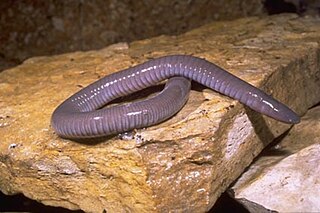 W
WThe Mexican burrowing caecilian is a species of limbless amphibian in the family Dermophiidae. It is found in Mexico and Central America, where it burrows under leaf litter and plant debris.
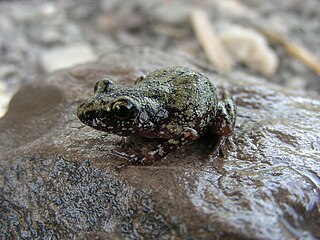 W
WEleutherodactylus pipilans is a species of frog in the family Eleutherodactylidae. It is found in southern and southeastern Mexico and southwestern Guatemala.
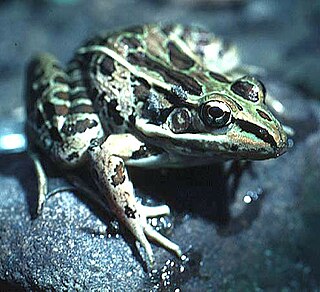 W
WForrer's grass frog or Forrer's leopard frog, Lithobates forreri, is a species of frog in the family Ranidae found in Mexico and Central America through Guatemala, El Salvador, Honduras, and Nicaragua to Costa Rica. It is a widespread and common frog found in lowland and seasonal tropical forests. It can also adapt to man-made habitats such as flooded agricultural lands and other water content systems. Reproduction requires permanent pools and lagoons.
 W
WThe Gulf Coast toad is a species of toad native to eastern and southeastern Mexico and Central America as far south as Costa Rica.
 W
WHyalinobatrachium fleischmanni, the Fleischmann's glass frog or northern glass frog, is a species of frog in the family Centrolenidae. It is found in the tropical Americas from southern Mexico to Ecuador. Specifically, these frogs occur in Mexico, Belize, Costa Rica, El Salvador, Guatemala, Honduras, Nicaragua, and Panama, Colombia, and Ecuador. Notice that this and related species have often been confused with each other, and the exact distribution depends on the source.
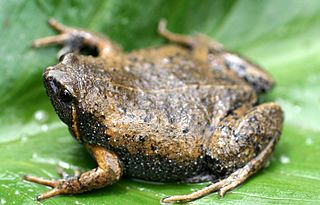 W
WHypopachus barberi is a species of frog in the family Microhylidae. It is found in El Salvador, Guatemala, Honduras, and Mexico. This species is found in humid pine-oak forests at the elevations of 1,470–2,200 m (4,820–7,220 ft) asl. It is threatened by habitat loss due to logging.
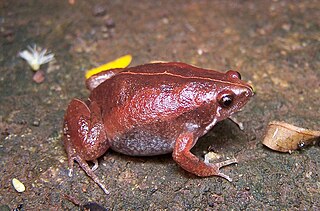 W
WHypopachus ustus, the two-spaded narrow-mouthed toad, is a species of frog in the family Microhylidae found in El Salvador, Guatemala, and Mexico. Its natural habitats are tropical dry and moist lowland forests. Breeding takes place in both temporary and permanent ponds. As this species is widespread and can live modified habitats, it is not considered threatened.
 W
WIncilius bocourti is a species of toad in the family Bufonidae. It is found in southwestern Guatemala and in Chiapas in the adjacent Mexico. Its phylogenetic position is uncertain; it might not to belong to this genus, being the sister taxon of Anaxyrus instead. It is named after Marie Firmin Bocourt, a French zoologist and artist.
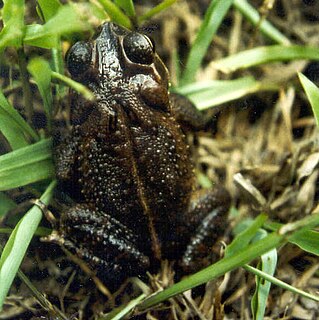 W
WIncilius campbelli is a species of toad in the family Bufonidae. It was first described in 1994. It is found in eastern Chiapas (Mexico), Guatemala, western Honduras, and Maya Mountains, Belize. Its natural habitats are lowland moist and premontane wet forest, and pristine forests in mountainous regions. It is threatened by habitat loss.
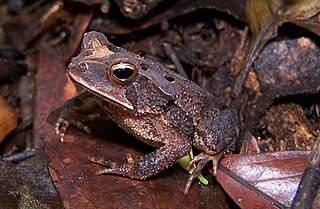 W
WIncilius canaliferus, also known as the dwarf toad, is a species of toad in the family Bufonidae. It is found along the Pacific slopes of western El Salvador, Guatemala, and southern Mexico. Its natural habitats are semi-deciduous forests near rivers and moderate-sized streams. Breeding takes place in ponds and streams. It also occurs in disturbed habitats, for example coffee plantations. Habitat loss and possibly water pollution are threats to this toad.
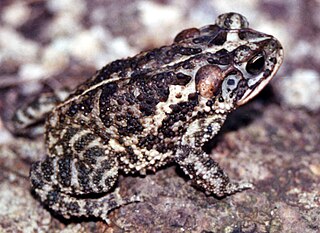 W
WIncilius coccifer is a species of toad in the family Bufonidae. It is found in southern Mexico and southeastward in the Central America through Guatemala, El Salvador, Honduras, and Nicaragua to northwestern Costa Rica. Several species that were formerly included in this species have been named as distinct species: Incilius porteri, Incilius ibarrai, Incilius pisinnus, and Incilius signifer. Its natural habitats are lowland dry and moist forests, and it occurs also in disturbed areas such as pastures, roadside ditches, gardens, and vacant lots in urban areas. It is an abundant and widespread species that is not facing significant threats.
 W
WIncilius ibarrai is a species of toad in the family Bufonidae. It is found in the central and southern highlands of Guatemala and adjacent Honduras. The specific name ibarrai honors Jorge Alfonso Ibarra (1921–2000), then-director of the Guatemalan National Natural History Museum.
 W
WIncilius luetkenii is a species of toad in the family Bufonidae. It is found in the Mesoamerica along the Pacific versant from central Costa Rica to extreme southern Chiapas, Mexico, as well as dry interior valleys of Guatemala and Honduras and San Juan River drainage in Costa Rica on the Atlantic versant. It occurs in open areas, including disturbed pasturelands in lowland dry forest, and to a lesser extent, in lowland moist and premontane moist forests. It breeds in temporary pools. It is a common species that is not facing major threats.
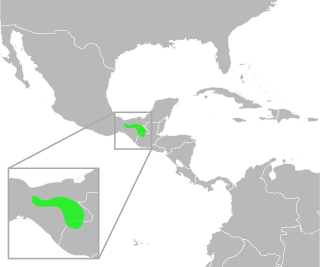 W
WIncilius macrocristatus a species of toad in the family Bufonidae. It is found in Chiapas in southern Mexico and the adjacent Guatemala. Its natural habitats are cloud forests and pine-oak-Liquidambar forests. Breeding takes place in streams. It is a rare species that is threatened by habitat loss caused by agriculture and human settlement, and by water pollution.
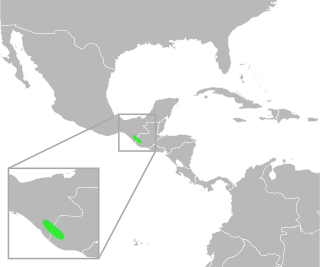 W
WIncilius tacanensis is a species of toad in the family Bufonidae. It is found in western Guatemala and eastern Chiapas (Mexico). Its name refers to Volcán Tacaná, its type locality. Its natural habitat is premontane tropical forest. It is assumed to be a stream breeder. It is a rare species threatened by habitat loss, and potentially, chytridiomycosis.
 W
WIncilius tutelarius is a species of toad in the family Bufonidae. It is found in the Sierra Chimalapa and Sierra Madre de Chiapas in Guatemala and Chiapas, Mexico. Its natural habitats are cloud forests and pine-oak (broadleaf) forests. It is closely associated with streams, its breeding habitat. It is threatened by habitat loss.
 W
WLeptodactylus fragilis, known under many common names such as the Mexican white-lipped frog, American white-lipped frog or simply white-lipped frog, is a species of leptodactylid frog. Its distribution ranges from the Lower Rio Grande Valley of Texas in the United States south through Mexico and Central America to Colombia and Venezuela. It is often—wrongly—referred to as Leptodactylus labialis (Cope, 1878), which is a junior synonym of Leptodactylus mystacinus.
 W
WLeptodactylus melanonotus is a species of frog in the family Leptodactylidae. It is found in Central America. Its natural habitats are subtropical or tropical dry forests, subtropical or tropical moist lowland forests, subtropical or tropical mangrove forests, subtropical or tropical moist montane forests, dry savanna, moist savanna, subtropical or tropical seasonally wet or flooded lowland grassland, intermittent freshwater lakes, freshwater marshes, intermittent freshwater marshes, pastureland, plantations, rural gardens, urban areas, heavily degraded former forest, water storage areas, ponds, and canals and ditches.
 W
WLithobates brownorum is a species of frog native to southern Veracruz and northeastern Oaxaca east through the Yucatan Peninsula and the uplands of Chiapas in southern Mexico through Guatemala and Honduras to Nicaragua. Its separateness from Lithobates berlandieri has been questioned but molecular data now supports the conclusion that it is a separate species.
 W
WThe Mexican narrow-mouthed toad is a species of sheep frog native to the Pacific and Caribbean lowlands from southern Texas to Costa Rica. Sheep frogs make a distinctive call that resembles a sheep's bleat during and after rainfall in warm months.
 W
WMorelet's tree frog is a species of leaf frog in the family Phyllomedusidae. It is found in Belize, El Salvador, Guatemala, Honduras, and Mexico. They have also been called black-eyed leaf frog and popeye hyla.
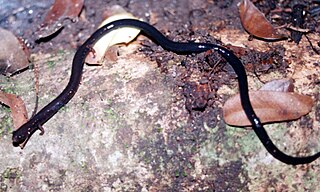 W
WOedipina taylori, commonly known as Taylor's worm salamander, is a species of salamander in the family Plethodontidae. It is found on the Pacific versant in south-eastern Guatemala, to central to north-eastern El Salvador and adjacent southern Honduras. Honduran populations might represent another species.
 W
WPlectrohyla acanthodes is a species of frog in the family Hylidae. It is found in Guatemala and Mexico. Its natural habitats are subtropical or tropical moist montane forests and rivers. It is threatened by habitat loss.
 W
WPlectrohyla guatemalensis, also known as the Guatemala spikethumb frog, is a species of frog in the family Hylidae. It occurs in the highlands of the Sierra Madre from southeastern Chiapas, Mexico, and eastward through the central and southwestern highlands of Guatemala to northwestern El Salvador as well as the Sierra de Nombre de Dios in north-central Honduras. It might be a composite of more than one species.
 W
WPlectrohyla sagorum is a species of frog in the family Hylidae. It is found in the Sierra Madre de Chiapas from Chiapas (Mexico) to southwestern Guatemala, with a single record from northwestern El Salvador. Its natural habitats are cloud forests at elevations of 1,000–2,050 m (3,280–6,730 ft) above sea level. Breeding takes place in streams. It is very rare in Mexico and El Salvador but abundant at two Guatemalan sites. It is threatened by habitat loss. Chytridiomycosis might also be a threat.
 W
WPlectrohyla teuchestes is a species of frog in the family Hylidae. It is endemic to Guatemala and only known with certainty from its type locality on the southern slope of the Sierra de Xucaneb, in the Alta Verapaz Department. There is also a report from another locality in Alta Verapaz. Frogs from Honduras now known as Plectrohyla exquisita were formerly included in this species.
 W
WPtychohyla salvadorensis is a species of frog in the family Hylidae found in El Salvador, Guatemala, and Honduras. Its natural habitats are subtropical or tropical moist montane forests, rivers, pastureland, and heavily degraded former forests. It is threatened by habitat loss.
 W
WThe Rio Grande leopard frog is a species of aquatic frog native to the southern United States in Texas and New Mexico, and south through Mexico and Central America. It is also sometimes referred to as the Mexican leopard frog. The epithet berlandieri is in honor of the naturalist Jean Louis Berlandier, who worked for the Mexican government on one of the first biological surveys of Texas.
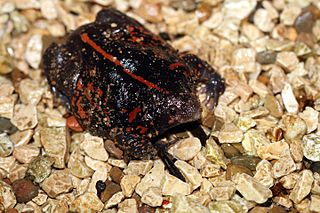 W
WThe Mexican burrowing toad is the only species in the genus Rhinophrynus and the family Rhinophrynidae of order Anura. Their distribution stretches from south Texas through Mexico, Belize, Guatemala, Honduras, and El Salvador to Nicaragua and Costa Rica. R. dorsalis mostly commonly inhabits the subtropical and tropical dry forests within its range characterized by wet and dry seasons, but may also be found during periods of heavy rain in pastures, cultivated field, roadside ditches or other open areas. The family was once more widespread, including species ranging as far north as Canada, but these died out in the Oligocene.
 W
WThe túngara frog is a species of frog in the family Leptodactylidae.